Well, I’ve gone and done it again: found something new in my own backyard. See, this weekend, Eric just refused to stay inside, and whenever I’m outside with him, I look around and see what there is to see. Literally no steps outside my back door (that is, as soon as you step out the door, stop), you look left, and you see a little corner of the yard, about 10 feet across. It used to have an ornamental pond (you know, with the black plastic kidney bean to give it shape) surrounded by rocks. We left the plastic pool and the rocks, but we replaced the water with peat, and in it we put a pond apple tree (Annona glabra):
some scarlet hibiscus (Hibiscus coccineus):
and some pickerelweed (Pontederia cordata):
Here’s what it all looked like when we began, back in December 2007:
But this weekend I found a new critter eating the pond apple leaves, a black caterpillar with angry orange and white latitudinal stripes and a shiny black head:
As you can see, it measures about 4 cm long:
And it’s a pretty voracious eater:
Since I know many of the butterflies in south Florida (there really aren’t that many, if you discount the skippers and duskywings), I assumed that this was a moth caterpillar. And since it was on my pond apple, I figured it would be pretty easy to find out what it might be. A quick internet search later left me frustrated though; the only critter that’s reported to eat pond apple leaves in the first few pages of Google searching (seriously, who goes past the first 5 pages of search results?) is the lovely Giant Sphinx moth (Cocytius antaeus), the larva of which is seen here in my Caterpillars of Eastern North America:
As you can see, that giant green horny-headed thing looks nothing like my angry-striped blackhead. And searching through all 700 species in Wagner left me nothing that looked quite right. Fortunately, as usual, the folks over at bugguide.net took up the challenge, and solved it quickly. It’s a Gonodonta species, perhaps just a funky-looking group of G. nutrix. Gonodonta is a genus in the Calpinae, the fruit-piercing moths. Here is what G. nutrix looks like in my field guide, since I’m sure you were too lazy to click the link (I can’t remember the last time I clicked a link in a blog post unless I was really really keen on the subject):
The photo above shows the angry red dots, but it doesn’t have nearly the amount of white stripes as my guys. Either G. nutrix is variable (quite possible) or it’s a close relative in the genus. In either case, it’s a better bet than any of the other guesses I had (I was guessing Forester moths, or maybe a Prominent, but wasn’t too happy with either of those guesses, either).
If you do decide to check out the species account at bugguide.net, you’ll see that the adult moth is really quite striking, with bold black wings and a rusty/orange hindwing that shows through when the wings are held open. I can’t wait to see these guys in my backyard (which will also help me find out if they really are G. nutrix, instead of an unidentified cousin). Of course, since we’re still in the larval stage here, it might be a while before they metamorphose…
Gono-, as you know, means seed, offspring, product, while –dont means tooth. I assume, then, that the genus name Gonodonta has something to do with its placement in the citrus-piercing moths. Or maybe it means their mouthparts look funny: Wagner tells us that “Adults of this largely tropical subfamily have a unique tongue or proboscis [please, it’s pronounced probossis, not proboskis] that is highly fortified apically”; maybe that’s what seed-tooth is supposed to evoke?
At all events, one more backyard mystery solved, or at least narrowed down considerably.
References
Wagner, D.L. (2005). Caterpillars of Eastern North America. Princeton University Press.

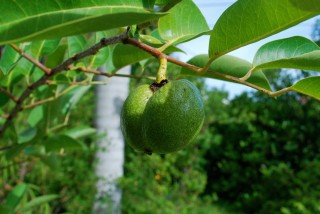
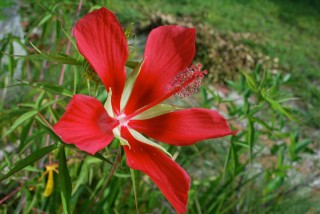
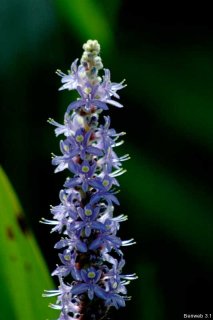

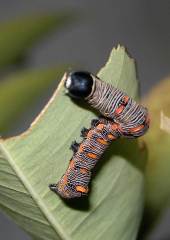
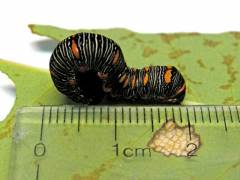
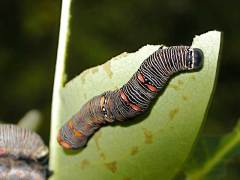
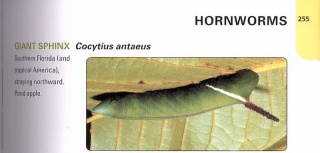
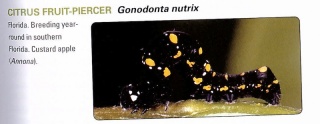
hi! I just found one of these guys in north east iowa, and have had an equally hard time identifying it. did you ever find out what it is exactly?